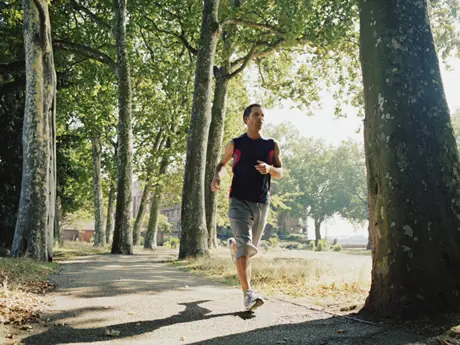
Is it more important to run more or run well? Every long-distance event has a slew of recreational athletes out there who trained just to finish. They sludge through the event, shuffling their feet just so they can cross the finish line. The achievement of finishing a marathon can be exhilarating, but the damages it can have on the body can be debilitating.
Some 66 percent of runners get injured. Why is this stat so high? Too many people rush into higher mileage than they are accustomed to, and that leads to overuse problems which can hinder overall performance.
Volume is an important component in the running world, but you shouldn't rush into high mileage. Get better at running first. Be smart with your training and don't let volume take precedence over technique. Focus on improving your form, efficiency and economy, and chances are you'll run longer. Sloppy reps performed over and over create bad behaviors, which, in running, will eventually cause injury. That's why dialing in your technique is critical; it might be the most important component to an injury-free endurance program.
More: 5 Exercises to Improve Running Mechanics
So, be smarter about your training and keep these tips in mind:
Learn to Run Well First
Don't rush into running long. This is a mistake I see many endurance athletes make. They want to rush into a marathon training program without running a handful of 5Ks and 10Ks first. I am all for setting ambitious goals, but it's imperative to be smart with the build up.
Get better at running shorter distances with good form first. Go see if you can run with perfect technique for 10 seconds, walk for a bit and then repeat. Add some speed to the 10-second intervals to promote good running form and get good at this first before moving onto longer durations. Progress to 20 seconds, 30 seconds and so on. Before you know it you'll be running with great technique over longer durations.
More: The Key to Good Running is Good Form
Build Your Kinetic Chain
This is usually my first priority when setting up a program for an endurance athlete. If the kinetic chain has leaks and movement dysfunctions, running will cause more harm than good. Yet, many endurance athletes skip this component in their program.
"Building the chain" does not mean going to the gym and performing bicep curls and leg presses. Implementing the inside-out approach is imperative to strengthening the body in a systematic way. You need strong stabilizers in your hips, ankles and shoulders, and adequate range of motion, to move efficiently; a stable inner core to protect your spine; and durable connective tissue to enable you to accept the demands of training loads.
- 1
- of
- 2
About the Author
Justin Levine
Get ACTIVE on the Go


Couch to 5K®
The best way to get new runners off the couch and across the finish line of their first 5K.
Available for iOS | Android







Discuss This Article